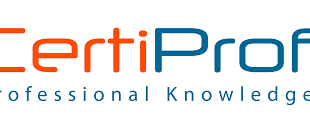Course Overview:
AI programming is a highly specialized area of game development, it should be seamless and invisible to the player by enhancing the experience on a subliminal level. This area of development is about providing the game with a ‘brain’ that works instinctively and independently based on the individual player’s gameplay.
Requirements:
- C++
- Python.
- PyTorch.
- PyBrain.
- Perl.
- STL.
- OpenGL and PhysX.
Terms and Conditions:
- Every MCQ set focuses on a specific topic in Gaming AI Developer Quiz Professional Certificate Quiz.
- 10 Multiple Choice Questions & Answers in Gaming AI Developer Certificate Quiz with Answers.
- This quiz consists of 10 multiple-choice questions.
- Each question in the quiz is in multiple-choice or “true or false” format.
- You may review your answer choices and compare them to the correct answers after your final attempt.
- To start, click the “Take the Quiz” button. When finished, click the “Submit Quiz” button.
Here are the Questions and Answers:
Question 1: General games involves __
- Only Single-agent and Multi-agent
- Neither Single-agent nor Multi-agent
- Multi-agent
- Single-agent
Question 2: Adversarial search problems uses __
- Cooperative Environment
- Competitive Environment
- Only Competitive and Cooperative Environment
- Neither Competitive nor Cooperative Environment
Question 3: Mathematical game theory, a branch of economics, views any multi-agent environment as a game provided that the impact of each agent on the others is “significant,” regardless of whether the agents are cooperative or competitive.
- True
- False
Question 4: Zero sum game has to be a __ game.
- Two player
- Single player
- Three player
- Multiplayer
Question 5: Which of the following is not an application of artificial intelligence?
- Database Management System
- Natural Language Processing
- Digital Assistants
- Computer Vision
Question 6: Which of the following symbols in AI are logical symbols?
- Implication
- Negation
- Conjunction
- All of the above
Question 7: The name of the Artificial Intelligence system developed by Daniel Bobrow was?
- SIMD
- BACON
- STUDENT
- None of the above
Question 8: ‘The Imitation Game’ was the original name of?
- The Halting Problem
- The Turing Test
- LISP
- None of the above
Question 9: Which algorithm takes two sentences as input and returns a Unifier?
- Unify algorithm
- Depth-first search
- Inference
- Hill-Climbing
Question 10: In which search problem, to find the shortest path, each city must be visited once only?
- Map coloring Problem
- Travelling Salesman problem
- Finding the shortest path between a source and a destination
- Depth-first search traversal on a given map represented as a graph
Question 11: Web Crawler is an example of______.
- Model-based agent
- Simple reflex agent
- Intelligent Agent
- Problem-solving agent
Question 12: The main function of problem-solving agent is to________.
- Solve the given problem and reach the goal
- Find out which sequence of action will get it to the goal state.
- None of the above
- Both (a) & (b)
Question 13: A process that is repeated, evaluated, and refined is called __
- Iterative
- Interpretive
- Descriptive
- Diagnostic
Question 14: Which of the following, is a component of an expert system?
- Knowledge base
- User interface
- Inference engine
- All of the above
Question 15: When a top-level function is entered, the LISP processor do(es)?
- It evaluates the function and the function’s operands
- It reads the function entered
- It prints the results returned by the function
- All of the above
Question 16: The traditional way to exit and LISP system is to enter __
- Ok
- Exit
- Quit
- Bye
Question 17: In which university the first demontration of AI program run?
- Carnegie Mellon University.
- Cambridge University
- Stanford University
- Oxford University
Question 18: The initial state and the legal moves for each side define the __ for the game.
- Forest
- Game Tree
- Search Tree
- State Space Search
Question 19: Decisions of Victory/Defeat are made in Game trees using which algorithm?
- BFS
- DFS
- Min/Max Algorithm
- Heuristic Search
Question 20: A knowledge-based agent can be defined with _ levels.
- 5 Levels
- 4 Levels
- 2 Levels
- 3 Levels
 Priya Dogra – Certification | Jobs | Internships
Priya Dogra – Certification | Jobs | Internships


